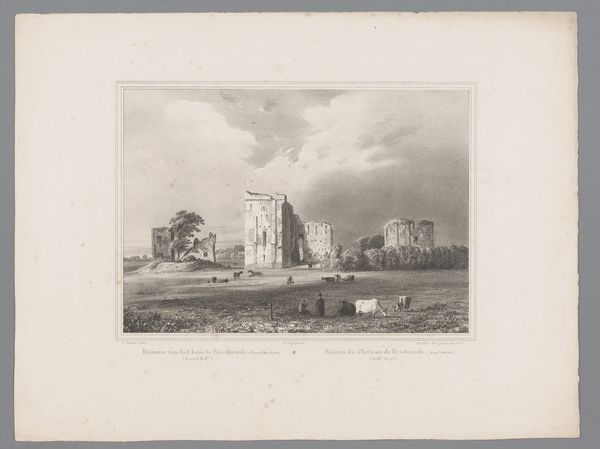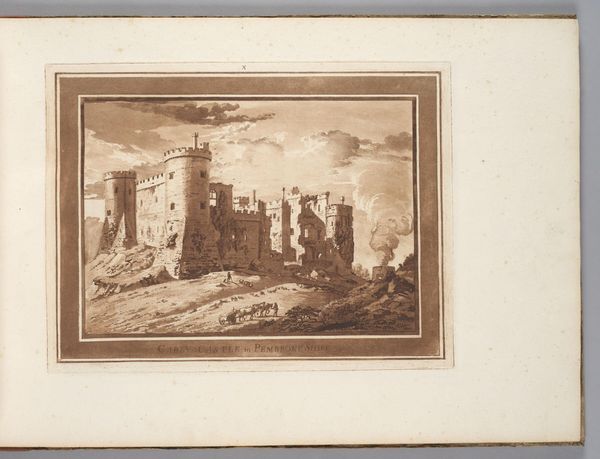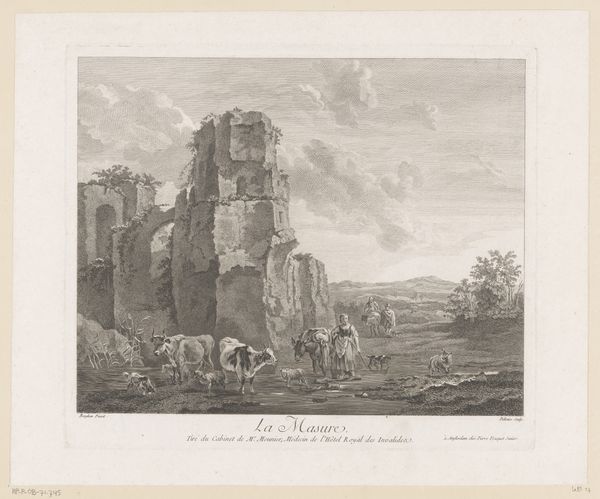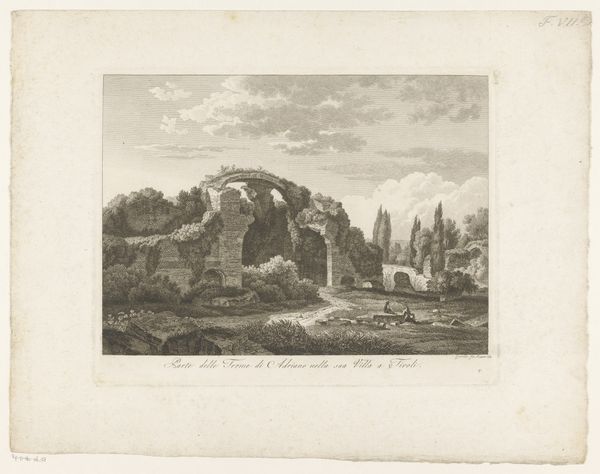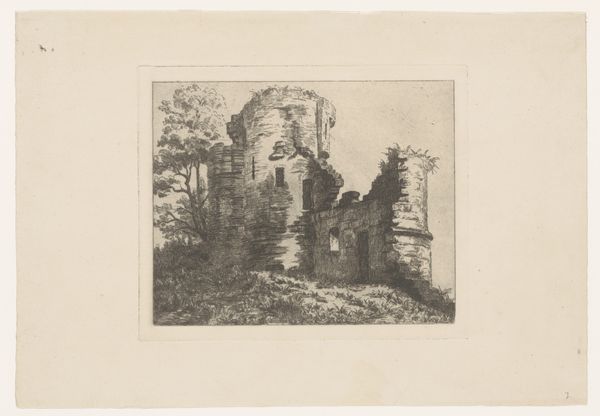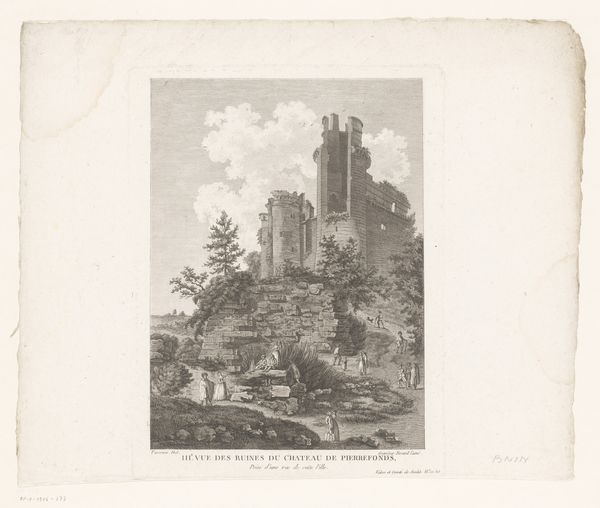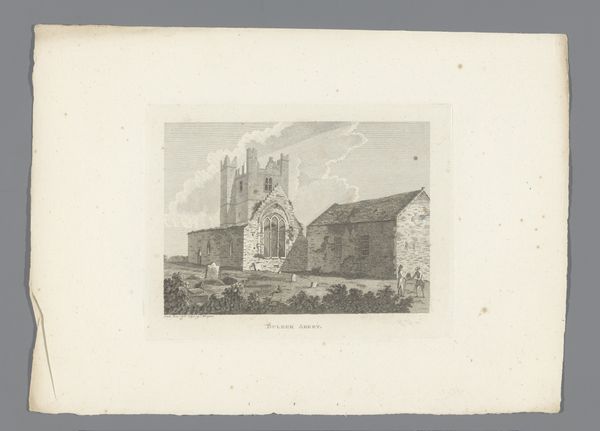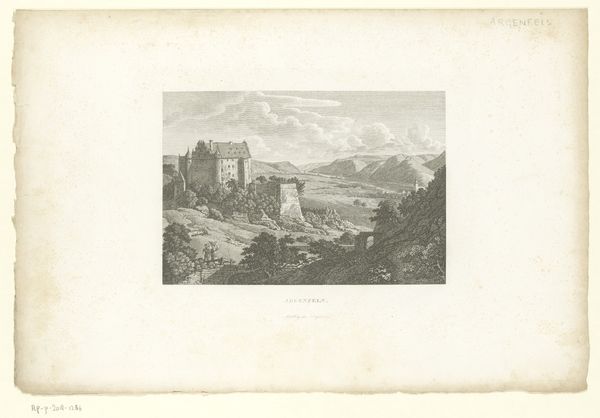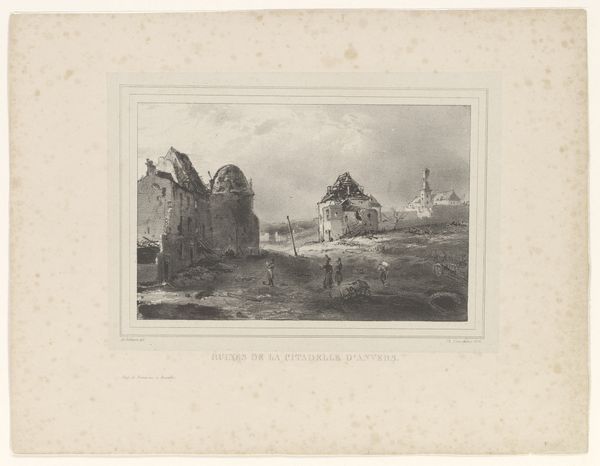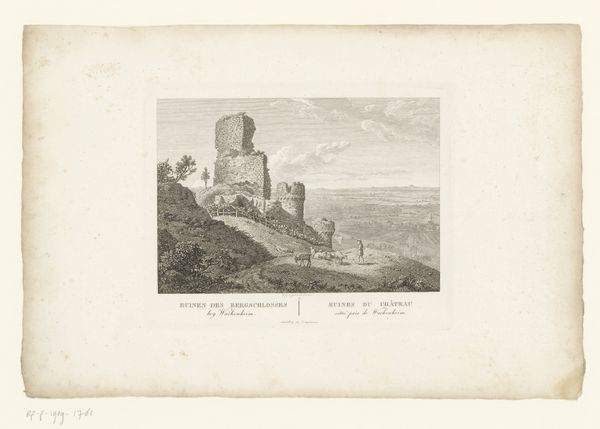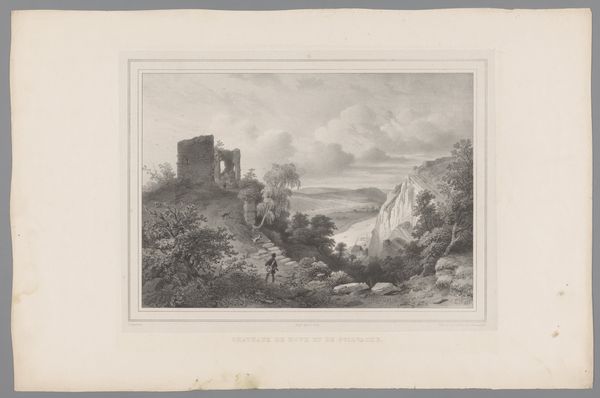
Dimensions: height 271 mm, width 360 mm
Copyright: Rijks Museum: Open Domain
Editor: Here we have Paulus Lauters's "View of the Ruins of Brederode Castle," created sometime between 1827 and 1875 using etching and drawing on paper. I'm struck by the desolate feeling it evokes, but also by the careful composition leading your eye towards the structure. What draws your attention when you look at this work? Curator: The organization of space, undoubtedly. Consider the foreground—almost barren save for the figures and some scant vegetation—in contrast to the density suggested by the ruins. How does this placement affect the viewer's engagement with the central architectural subject? Is there a conversation between the fragility implied by the ruins, the enduring structure, and the figures' possible narrative? Editor: So, it’s not just about depicting a historical site, but about the relationships between elements? The figures seem so small in relation to the castle ruins; do they represent something about the futility of human effort? Curator: Precisely. Ask yourself, what effect does Lauters achieve by diminishing the human form relative to the decaying edifice? Scale is crucial. And note the meticulous details in the etching, specifically how light interacts with the ruined stone. The textural variance created through the hatching and cross-hatching techniques gives a real sense of depth and decay. The very line work invites the viewer to engage closely with the process of deconstruction, and also emphasizes tonal variation. Editor: That close observation makes me appreciate how much detail is packed into a monochrome palette. It goes beyond simple representation; it’s about capturing a specific mood and moment. I initially saw 'desolation' as just an atmospheric quality, but I now see how every formal element works toward this specific meaning. Curator: A valuable distinction. By isolating and considering these formal choices, you uncover how meaning emerges from structure. A rewarding experience, wouldn’t you agree?
Comments
No comments
Be the first to comment and join the conversation on the ultimate creative platform.
